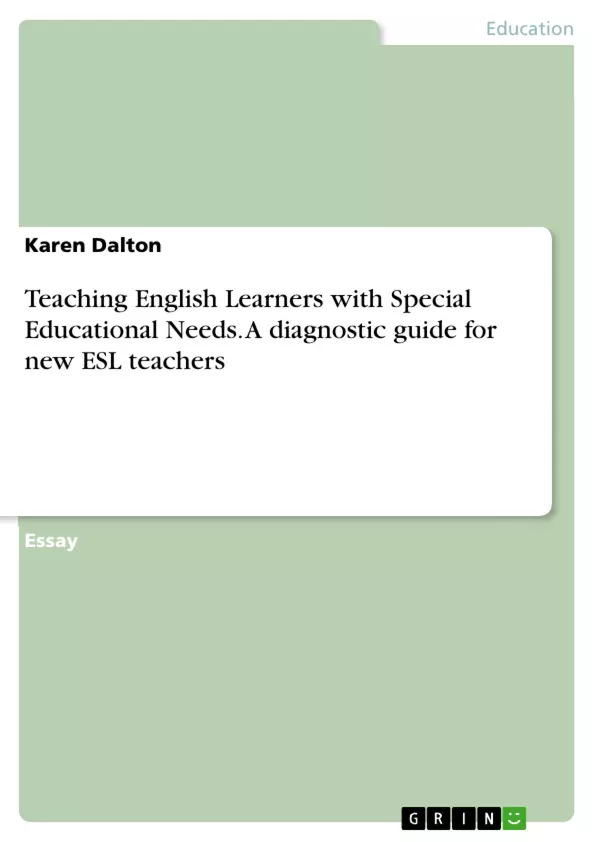Perhaps you have just completed your TESOL or DELTA course and living your dream, teaching English in Japan, China or Kuwait. However, there is an increasingly common scenario where, according to Cloud, mainstream teachers, inclusive educators, or special education practitioners place a phone call or email to an ESL specialist wanting to know quickly how to teach ESL or when the situation is reversed and an ESL teacher contacts a special education unit when they are challenged by a student having difficulties learning. This is a scenario that as classroom populations are becoming increasingly diverse, including but not limited to first language speakers, English as Second Language learners and those with special educational needs. According to Nancy Cloud, “There is a paucity of Teaching English to Speakers of Other Language programs which provide crossover training in special education or special education programs that encourage specialization in TESOL.” While, it is human nature to hope that simply asking how to solve a specific problem will result in a specific answer applicable to all students in all situations, fifteen percent of the global population according to the World-Health Organization and the World Bank, identified in its 2011 joint report as having a disability.
Inhaltsverzeichnis (Table of Contents)
- Introduction
- Assessment
- Learning and Behaviour Challenges
Zielsetzung und Themenschwerpunkte (Objectives and Key Themes)
This guide aims to provide new ESL teachers with a comprehensive understanding of the complexities of teaching English language learners with special educational needs. It delves into the challenges of identifying and supporting these students, particularly in inclusive educational settings.
- Overrepresentation of English language learners in special education classes
- Distinguishing students with learning disabilities from those struggling due to limited English
- Importance of native language proficiency and its impact on English language acquisition
- Influence of social and economic factors on educational outcomes
- The impact of labeling on students' self-concept and social relationships
Zusammenfassung der Kapitel (Chapter Summaries)
- Introduction: This chapter introduces the growing need for ESL teachers to understand and address the educational needs of students with disabilities. It highlights the challenges of navigating the intersection of ESL and special education, emphasizing the lack of training and resources available to teachers in this area. The chapter also discusses the overrepresentation of ESL students in special education classes and the potential for misdiagnosis due to limited English proficiency.
- Assessment: This chapter explores the complexities of assessing ESL students, emphasizing the need for comprehensive evaluations that go beyond language skills. It outlines the importance of assessing students' native language proficiency, academic background, and learning and behavior challenges. The chapter also discusses the various tools and methods available for conducting assessments, including culturally and linguistically appropriate assessments.
- Learning and Behaviour Challenges: This chapter delves into the specific learning and behavioral challenges faced by ESL students with special needs. It discusses the potential for these challenges to be exacerbated by language barriers and cultural differences. The chapter also examines the importance of individualized instruction and supports, including strategies for promoting language development, adapting curriculum, and addressing behavioral issues.
Schlüsselwörter (Keywords)
This text focuses on key concepts such as inclusive education, English as a Second Language (ESL), special educational needs, second language acquisition disorders, assessment, learning and behavior challenges, and cultural and linguistic diversity. It also explores research findings and interventions for supporting ESL students with disabilities.
- Arbeit zitieren
- Karen Dalton (Autor:in), 2016, Teaching English Learners with Special Educational Needs. A diagnostic guide for new ESL teachers, München, GRIN Verlag, https://www.grin.com/document/438706



